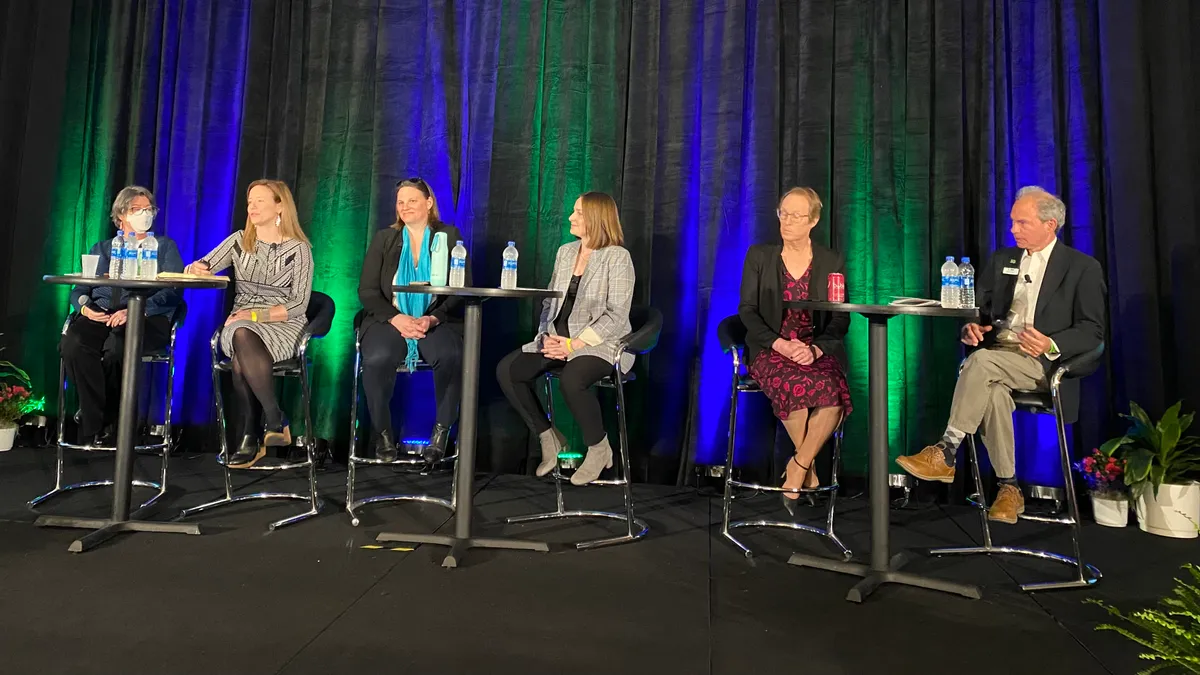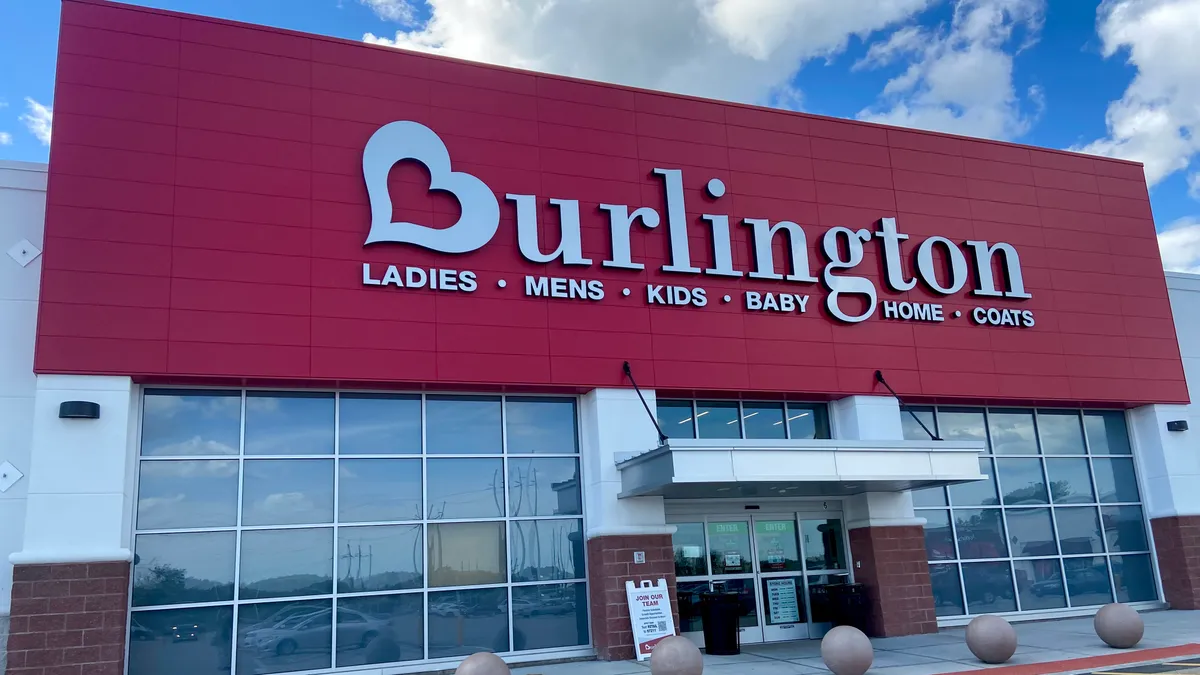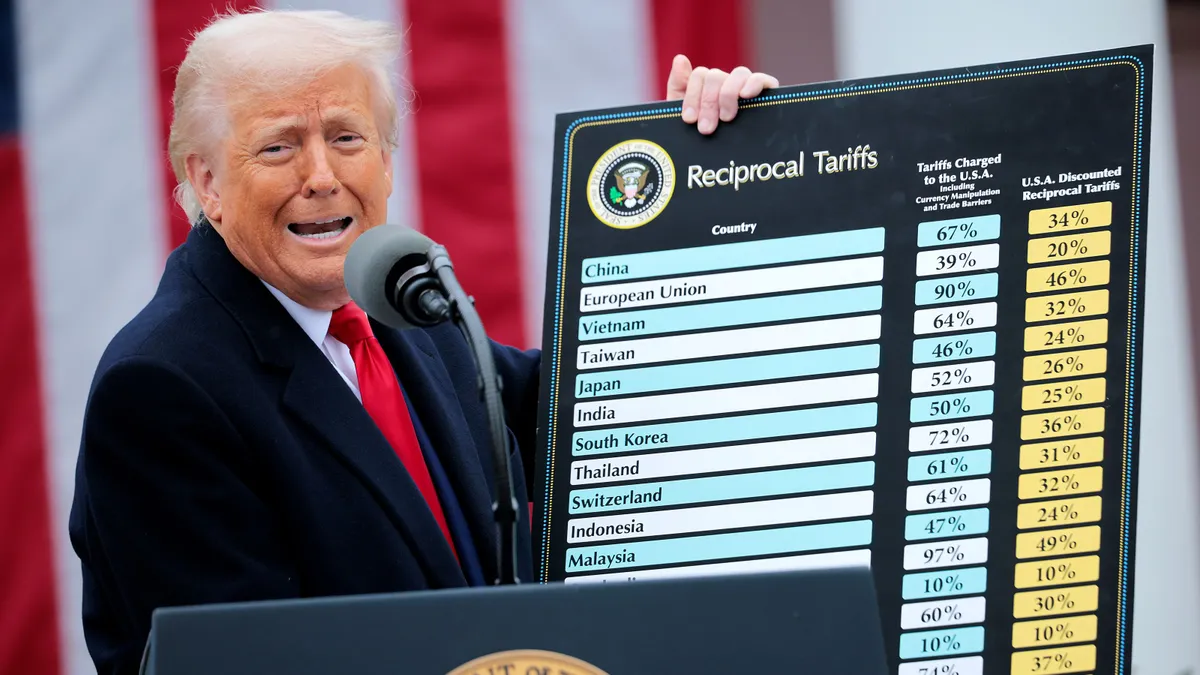Plenty of brands have already announced their 2025 goals for increasing recycled content in their packaging, but supply of postconsumer recycled resin will likely fall short of the 2025 demand, said speakers at the Plastics Recycling Conference.
Experts weighed in on how to remedy these supply and demand issues. They urged rapid mobilization to improve recycling collection while building consensus among stakeholders through complex policies such as extended producer responsibility (EPR), container deposit bills, and postconsumer recycled content laws.
The conference, hosted by Resource Recycling and the Association of Plastic Recyclers, was held March 7-9 in Oxon Hill, Maryland.
Growing supply to meet projected demand
Top of mind at the conference was the huge demand for recycled resin spurred by recent brand and policy moves. Big brands have pledged to integrate recycled resin into their plastic packaging, with many setting goals for using specific proportions of recycled resin by 2025. At the same time, states including New Jersey,Washington and California have passed laws requiring certain plastic products to contain more recycled content, and conference speakers expect more states will take that action in the coming years.
Current U.S. recycling rates are unable to match projected demand, said Resa Dimino, managing partner at consulting firm Signalfire Group, during a policy discussion session. Though the United States has been reliably recycling high density polyethylene (HDPE) and polyethylene terephthalate (PET)for about 30 years, recycling rates are stagnant at between 25% and 30%, while plastics in less mature markets, such as polypropylene (PP), are at even lower recycling rates. “We have a big hill to climb to meet these targets,” she said.
The U.S will need to double collection of most plastic resin types to meet the projected demand for products with a 25% recycled content composition, and “for polypropylene, the amount is greater than that,” she said of the growth needed. Dimino estimated collection for most resins will need to triple to be able to supply enough to meet 50% PCR goals.
Chemical recycling technology may be able to help meet the “astronomical” demand, said Emily Friedman, recycled plastics senior market editor for the Independent Commodity Intelligence Services (ICIS). For that to work, the U.S. would need to build at least another 145 mechanical recycling plants to meet 2025 targets. To reach the 2030 targets, the industry would need a 45% compounded annual growth rate, she said.
Some speakers expressed concern about relying on chemical recycling to generate the recycled feedstock needed as a strategy for handling and processing plastic in coming years. Kaitlyn Trent, a plastics campaigner for Greenpeace, cited a report that it could be 2050 before chemical recycling facilities are producing the level of recycled resin the market needs. "We don’t have time to wait until 2050 because plastic pollution won’t wait until then," she said.
Dave Andrew, vice president of new market development for ExxonMobil, said that the company plans to process one billion pounds of plastic per year via chemical recycling within five years.
Complicating the supply issue is the growing demand for resins approved for food-contact applications, which must meet U.S. Food and Drug Administration standards. Further,brand owners in the market for widely-recycled PET face another complicating factor is that highly-recycled PET faces competition from other consumers markets other than those making major brand commitments, such as the fiber industry, Friedman said.
"What's really tying us up, and I think we all agree, is the supply side of things, the feedstock into this market," she said.
Seeking consensus on policy to drive collection
Those concerned about limited recycled resin supply said it’s more important than ever for stakeholders to communicate better with each other to reach consensus on policies that could improve and streamline recycled plastic collection. During the policy panel discussion, speakers noted how EPR and bottle bill provisions are still divisive in many states, but attitudes are beginning to change, in part because of volatile commodity markets and plastics supply pressures.
"We've seen bale prices shoot up over the last year. Every time prices shoot up, supply stays the same. We see that price does not drive supply, so we need policy to drive supply," Dimino said.
Craig Cookson, the American Chemistry Council’s senior director of plastics sustainability, said the organization sees EPR as a driver to help fund local recycling systems and kick-start more collection, as long as the model "doesn’t disrupt business partnerships in the end markets or innovation on the back end — let's have a full free market that can compete."
Cookson said he sees "opportunities" in the EPR provisions of the federal Break Free From Plastic Pollution Act, a bill ACC has opposed due to a provision that would temporarily suspend permits on new resin plant construction. Though ACC still does not support the whole bill, "I think we all agree that supply is an issue. I think we all agree that we need strong end markets and that recycled plastic targets are a good idea," he said.
Bree Dietly, principal for Breezeway Consulting, speaking as a representative of American Beverage, said consensus-building is key to building strong bills. The beverage industry’s long-stated goal is to collect as many beverage containers as possible to turn them into new beverage containers, but "we're agnostic on policy," Dietly said. "We acknowledge that deposits make sense in some places, that EPR makes sense in some places, that minimum content makes sense in some places."
Though speakers agreed stakeholders were getting better about collaborating more closely on recycling policies, they still don’t always agree on which style of EPR works best. Dietly said the beverage industry considers Maine’s newly-approved EPR for packaging bill to be "lousy" because it gives too much control to the state government, but it supported the EPR bill in Washington, which died before the state’s legislative session ended.
"Program design matters. Just because it has EPR on it doesn’t mean it's a good bill," she said.
Yet some brands represented at the conference said they’re committed to their recycled content goals, noting that consumers are more savvy than ever about greenwashing and want to see real data behind brand recycling claims. Numerous signatories to the U.S. Plastics Pact attended the conference to outline their recycled content and packaging commitments. In 2020, 6 million metric tons of plastic packaging placed on the U.S. market was produced by U.S. pact activators, according to the pact’s baseline report released during the conference.
Brands can also invest in recycling infrastructure improvements to better the entire system, said John Caturano, national recycling manager for Nestle's North American procurement division. In 2020, the company invested $30 million into one of Closed Loop Partners’ private equity funds to help upgrade U.S. recycling infrastructure and give the company better access to food-grade recycled plastics. “We’re getting much more integrated into the market infrastructure,” he said.
























